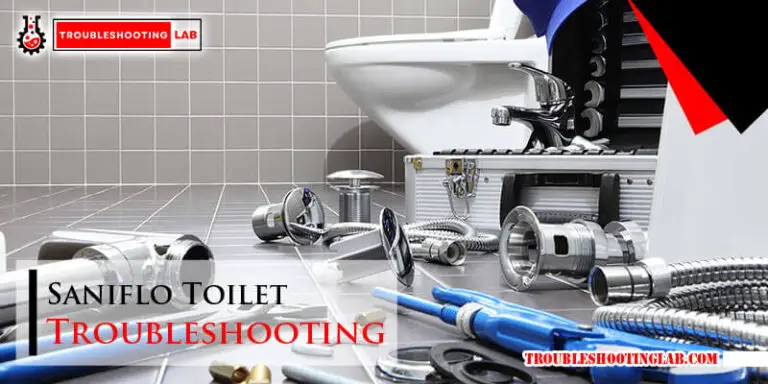Fluidmaster 400 Model Troubleshooting: Quick Fixes!
Troubleshooting the Fluidmaster 400 model typically involves addressing fill valve malfunctions or leaks. Common solutions include adjusting the water level, cleaning the valve, or replacing worn parts.
The Fluidmaster 400 is a staple in the world of toilet repair, renowned for its reliability and ease of maintenance. Many homeowners and plumbers turn to this model when faced with running toilets or refill issues. The design of the 400 model allows for simple adjustments and straightforward fixes, making it a top choice for DIY enthusiasts.
It’s crucial to diagnose the issue correctly to ensure a quick and effective repair. With a few tools and some basic knowledge, most problems with the Fluidmaster 400 can be resolved, restoring your toilet’s functionality without the need for costly professional services. This introduction sets the stage for an in-depth look at the most common Fluidmaster 400 issues and how to tackle them efficiently.
Introduction To Fluidmaster 400
Explore the essentials of the Fluidmaster 400, a reliable toilet fill valve, as we delve into effective troubleshooting techniques. This guide simplifies common issues, ensuring your bathroom’s centerpiece operates seamlessly.
Fluidmaster 400 is a popular toilet fill valve. Many homes rely on it for efficient toilet operation. This model is known for durability and ease of repair. Understanding its basics can save time and money.
Common Issues With The Fluidmaster 400
- Running Toilet: The valve may not shut off.
- Weak Flush: Water may not fill the tank properly.
- Leaks: Water might escape from the valve.
- Noisy Operation: Sounds may occur during tank refill.
Benefits Of Diy Troubleshooting
- Cost Savings: Avoid expensive plumber bills.
- Quick Fixes: Solve problems fast without waiting.
- Learning Experience: Gain useful DIY skills.
- Peace of Mind: Ensure your toilet works well.
Initial Assessment For Fluidmaster 400
Before fixing your Fluidmaster 400, do an Initial Assessment. This step helps you understand the problem. You’ll save time and avoid extra work.
Tools You’ll Need
- Adjustable wrench – for loosening and tightening nuts.
- Phillips and flat-head screwdrivers – for various screws.
- Plunger – to clear the toilet before work.
- Towels and a sponge – to clean up any spills.
Safety Precautions Before You Begin
- Turn off the water supply to your toilet. Find the valve behind it and turn it clockwise.
- Flush the toilet to drain the tank. This makes it safe to work.
- Place towels around the toilet. They catch any water spills.
- Wear gloves to protect your hands. Keep your workspace clean and dry.
Fluidmaster 400 Toilet Won’t Stop Running
A constantly running toilet wastes water and hikes up your bill. The Fluidmaster 400 model is no exception. When it won’t stop running, two common culprits are the float and the flapper seal. Let’s dive into troubleshooting these parts.
Adjusting The Float
The float controls the water level. A high water level can cause a constant run. Here’s a quick fix:
- Turn off the water supply to your toilet.
- Flush the toilet to drain the tank.
- Locate the float attached to the fill valve.
- If the float is a cup-style, pinch the clip and slide it down.
- For a ball float, twist the screw or bend the arm to lower it.
- Turn the water back on and check the water level.
- Adjust as needed to stop the water just below the overflow tube.
Checking The Flapper Seal
A bad flapper seal lets water leak into the bowl. Follow these steps:
- Shut off the water and flush to empty the tank.
- Unhook the flapper from the bottom of the tank.
- Inspect it for cracks or decay.
- Clean any mineral buildup from the flapper and seat.
- If damaged, replace with a new flapper.
- Hook the new flapper in place and turn on the water.
- Test the seal by flushing a few times.
Fluidmaster 400 Weak Flush Or No Flush
Is your toilet not flushing right? It could be a weak flush. Or maybe it won’t flush at all. Let’s figure out why.
Inspecting The Flush Valve
The flush valve is key for a strong flush. Check it first.
- Turn off the water at the toilet’s base.
- Remove the toilet tank lid. Place it safely.
- Inside, you’ll see the flush valve. It’s round.
- Make sure the flapper seals well.
- Cracks or warps in the flapper mean replace it.
- A chain connects to the flush lever. Check the slack.
- Too tight or loose affects the flush. Adjust as needed.
Clearing Rim Jets Or Siphon Holes
Little holes around the bowl’s rim are important. They help the flush.
- Pick a stiff brush to clean the rim jets.
- Gently poke each hole to remove buildup.
- Vinegar can help dissolve hard water deposits.
- Let the vinegar sit overnight for best results.
- Flush the toilet to rinse away any leftovers.
Follow these steps to fix your flush. Simple, right?
Fluidmaster 400 Water Leaking From The Tank
Is your toilet tank leaking water? You’re not alone. A common issue with the Fluidmaster 400 model involves water escaping from the tank. This not only wastes water but can also increase your water bill. Let’s tackle this problem together.
Replacing The Shank Washer
First, let’s look at the shank washer. This small part can cause big leaks if it’s worn out. Follow these steps to replace it:
- Turn off the water supply to your toilet.
- Flush the toilet to drain the tank.
- Remove the tank’s water supply line.
- Unscrew the locknut holding the fill valve. Use pliers if needed.
- Take out the old shank washer.
- Put a new shank washer in place.
- Reattach the locknut and tighten it by hand.
- Reconnect the water supply line.
- Turn the water supply back on.
With a new shank washer, the leak should stop.
Tightening The Locknut
Sometimes, the solution is simpler. A loose locknut can cause leaks. Tighten it to fix the issue. Here’s how:
- Shut off the water supply to the toilet.
- Flush the toilet to empty the tank.
- Find the locknut under the tank. It holds the fill valve.
- Use pliers to tighten the locknut. Be gentle to avoid cracking.
- Turn the water back on.
After tightening, check for leaks. No more water should escape.
Maintenance Tips For Fluidmaster 400
Maintaining your Fluidmaster 400 is vital for a healthy toilet. Proper care prevents leaks and other issues. Follow these easy tips to keep it in top shape.
Regular Cleaning Routines
Regular cleaning extends your toilet’s life and performance. Dirt and grime can cause clogs and wear. Be sure to clean these parts:
- Flush Valve: Remove debris that might cause leaks.
- Fill Tube: Ensure it’s clear for water to flow smoothly.
- Gaskets and Seals: Wipe to prevent mineral buildup.
Use mild cleaners to avoid damaging the components. A soft cloth or brush works well for cleaning.
Periodic Component Checks
Regular checks keep the Fluidmaster 400 running well. Look at these parts every few months:
| Component | Check For | Action |
|---|---|---|
| Flapper | Wear or warping | Replace if needed |
| Chain | Proper slack | Adjust as necessary |
| Fill Valve | Consistent water flow | Clean or replace |
Listen for odd noises or running water. These signs might indicate a part needs attention. Replacing worn parts prevents bigger issues later.
When To Call A Professional
Troubleshooting the Fluidmaster 400 can be straightforward. Yet, certain situations demand professional expertise. Knowing when to call an expert ensures the toilet repair is quick and effective.
Identifying Complex Issues
Some toilet malfunctions are beyond DIY fixes. Signs like persistent leaks, water damage, or complex internal problems require a plumber’s touch. Look for these indicators:
- Unusual noises after flushing
- Water constantly running in the toilet bowl
- Recurring clogs despite regular maintenance
A professional can diagnose these effectively. They have the right tools and experience.
Benefits Of Professional Repair
Expert intervention offers several advantages:
| Benefit | Description |
|---|---|
| Guaranteed Fix | Professionals ensure the job is done right the first time. |
| Time-Saving | Experts resolve issues faster, saving you time. |
| Long-Term Solution | They provide durable repairs, preventing future problems. |
Calling a plumber also prevents further damage. This can save money in the long run.
Frequently Asked Questions
What Causes A Fluidmaster 400 To Leak?
A Fluidmaster 400 may leak due to a worn flapper, faulty fill valve, or improper chain adjustment. Regular wear and tear or mineral buildup can also lead to leaks.
Can I Adjust The Water Level On My Fluidmaster 400?
Yes, adjusting the water level in your Fluidmaster 400 is possible by turning the adjustment screw on the top of the fill valve to raise or lower the float.
How Do I Fix A Noisy Fluidmaster 400?
To fix a noisy Fluidmaster 400, ensure the valve is free from debris, adjust the water pressure, and check that the fill valve’s gasket isn’t worn or in need of replacement.
Why Won’t My Fluidmaster 400 Stop Running?
A Fluidmaster 400 that won’t stop running may have a misaligned float, a faulty seal, or a clogged valve. Cleaning or replacing the affected parts often resolves the issue.
How To Replace Fluidmaster 400’s Flapper?
Replacing the flapper on a Fluidmaster 400 involves shutting off the water supply, draining the tank, unhooking the old flapper, and snapping the new one in place.
Conclusion
Tackling issues with your Fluidmaster 400 model doesn’t have to be a headache. With the right approach, most problems can be quickly resolved. Remember, regular maintenance is key to avoiding future troubles. For those trickier issues, refer back to our troubleshooting guide.
Keep your toilet running smoothly and efficiently with these handy tips.







I have a Fluidmaster 400 Anti-siphon valve. (no external flapper. flapper is in self-contained unit.)
When the toilet is flushed, within two seconds the flapper unit seals off the flush function, making it necessary to flush it again other- wise you still have waste in the toilet. None of the hardware stores carry the 400A and the 400H model. I need to know how to adjust the flush time. The handle inserts into a plastic arm rather than the standard chain.
Thanks for sharing your issue! It sounds like the flush timing on your Fluidmaster 400 model is too short, which can be adjusted. Since your model has a plastic arm instead of a chain, follow these steps:
If your hardware store doesn’t stock replacement parts, try ordering directly from Fluidmaster’s website or another online retailer. Also, their customer service might provide specific instructions for your model. Let me know if this helps or if you need more guidance!
with the more water to bowl dial turned to max water in bowl, the water will fill/run about every 20 minutes. replaced to valve assembly with a new one same issue. water does not run in the off to bowl position.
Hi there 👋
Thanks for your comment! If the Fluidmaster 400 keeps refilling every ~20 minutes even with the “More Water to Bowl” dial set to max, it could indicate a slow leak from the tank to the bowl. Since you’ve already replaced the valve assembly and it’s still happening, the issue is likely with the flapper or the flush valve seat not sealing properly.
Here are a few things to try:
Also, in the “Off to Bowl” position, water should not flow to the bowl at all. If it still does, the fill valve could be defective or not adjusted properly—even if it’s new.